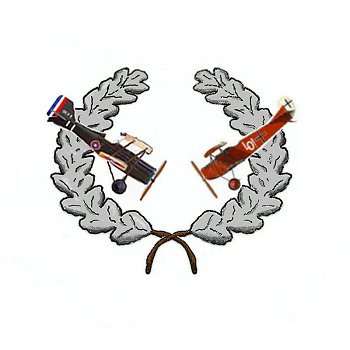Bibliography II.... sources on design, aerodynamics, and supplemental works used for the preparation of this system |


Part II: Works which dealt with aircraft design, aerodynamics, weapons and tactics: Baughman, Harold. Baughman's Aviation Dictionary and Reference Guide. Glendale, CA: Aero Publishers, 1942. Useful information on early aircraft construction, maintanence, and basic aerobatics. Detailed information down to size and quality of individual screws and fasteners! Covin, Fred and Henry Colvin. The Aircraft Handbook. New York: McGraw-Hill Book Co. Inc., 1929. Gentle, Ernest, ed. Aviation & Space Dictionary. Los Angeles: Aero Publishers, Inc., 1961. Gunston, Bill. World Encyclopedia of Aero Engines. Somerset, UK: Patrick Stephens Ltd., 1995, 3rd ed. Hoerner, Sighard. Aerodynamic Drag. Dayton, OH: The Otterbein Press, 1951. Hogg, Ian and John Weeks. Military Small Arms of the 20th Century. Northbrook, IL: DBI Books, nd. Lee, John G. Fighter Facts and Fallacies. New York: Wiliam Morrow and Company, 1942. Interesting source which focuses on the problems of wing loading in aircraft design. McCracken, Jack. "The Best World War I Fighter," Over the Front. League of World War I Aviation Historians, Spring 1999. Excellent introductory article on actual handling characteristics of World War I machines. McCracken was a career aeronautical engineer with the Vaught Corporation, working on a number of major projects for the U.S. military. Perkins, Courtland and Robert Hage. Airplane Performance Stability and Control. New York: John Wiley & Sons, Inc., 1949. Excellent work to analyze aircraft performance and handling characteristics. Be prepared for a full dose of calculus with this work. Sims, Edward H. Fighter Tactics and Strategy, 1914-1970. New York: Harper & Row, pub., 1972. Good resource on tactics, but lacking in diagrams. ------------------------------- Supplemental and General works which aided in developing this system: Burg, David and L. Edward Purcell. Almanac of World War I. Lexington, KY: University Press of Kentucky, 1998. A day by day review of the war. Dupuy, Col. Trevor N. Numbers, Predictions & War. Indianapolis: Bobbs-Merrill Co., 1979. Fuller, JFC. A Military History of the Western World. New York: Funk & Wagnalls Co., 1956; vol 3. Fuller is always controversial..... and always enlightening. Gardiner, Robert. Conway's All the World's Fighting Ships, 1906-1921. London: Conway Maritime Press, 1986. Excellent information contained on early British naval aviation. Few realize that the British were pioneers in this field, especially in the use of aircraft carriers. Gilbert, Martin. Atlas of the First World War. New York: Oxford University Press, 1994. Green, William and Gordon Swanborough. Flying Colors. New York: Barnes & Noble Books, 1999. Wheeler, Barry. Military Aircraft Markings & Profiles. New York: Gallery Books, 1990. Wood, J.P. Aircraft Nose Art. New York: Smithmark, 1996. I would also like to acknowledge the assistance of Bill Hardman of the Naval Aviation Museum in Pensacola, Florida; Jack McCracken for his patient work with us going through the calculus formulae for aircraft handling (as part of on-going research), not to mention a few fellow teachers who helped in the physics realm, especially when dealing with the "tactical diameter" of the aircraft and maneuvering characteristics; Bob O'Hara, formerly of the PRO in Kew, who moved us up on his busy schedule to delve into the British aviation documents; Jim Streckfuss of the League of World War I Aviation Historians for his encouragement; Matthew Ward of Pegasus Aviation for his constant (though humorous and biting!) critique of aircraft performance; Bob Pearson for the use of his excellent website with the markings of many famous, and not so famous, aircraft of the war; and to the guys of the Ritterorden team for constant flight evaluation and patience as we developed this system. |